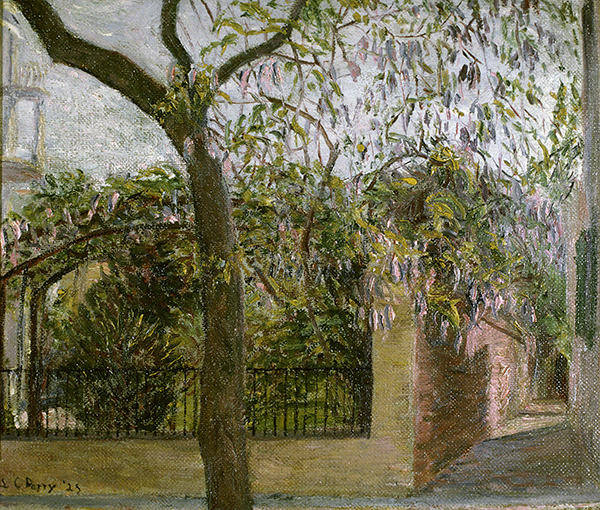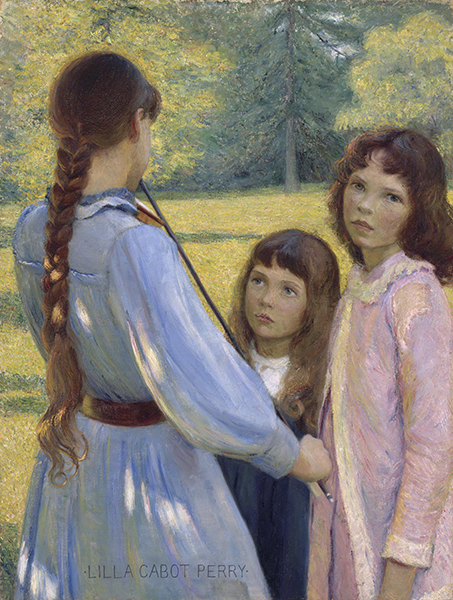Lilla Cabot Perry
Let’s make this the week of Lilla Cabot Perry for her birthday on January 13th! Like many women Impressionists in the early 1900s (such as Helen Hamilton and Harriet Lumis, both of whom I have discussed previously), I feel she has been neglected by studies of American Impressionism. There was a bumper crop of them.
 |
| Lilla Cabot Perry (1848?–1933, US), Meeting Street, Charleston, South Carolina, 1925. Oil on academy board, 7 7/8" x 14 3/16" (20 x 36 cm). Photo source: R.H. Love Gallery, Chicago. Digital image © 2020 Davis Art Images. (8S-18078) |
Perry was the daughter of a prominent surgeon in Boston. As a member of a wealthy family, she was well educated in the humanities and the “genteel” pursuits of poetry, music, and language. She may have taken drawing lessons, but no formal artistic training is known before 1884.
In 1865 her family moved to a farm, where her interest in landscape and nature developed. Her earliest painting studies in 1884 were with Alfred Quinton Collins (1862–1903), who had studied under the painterly academic realist Léon Bonnat (1833–1922) in Paris. Her earliest works, portraits of her children—a lifelong preoccupation in her body of work, much like Mary Cassatt (1844–1926)—reflected the teacher’s style.
Perry painted with Robert Vonnoh (1858–1933) in 1885. Vonnoh was an American Impressionist who had painted out of doors in France. This distinct departure from her more formal training represented the pivotal moment in which Perry turned entirely to Impressionism. She also studied with American Impressionist Dennis Miller Bunker (1861–1890), who had also painted out of doors in France.
Perry’s first studies in Paris (1887–1889) introduced her further into Impressionism and established her reputation in the French Salon. She spent nine summers in Giverny between 1889 and 1909, forming a close friendship with Claude Monet (1840–1926), whose Impressionistic handling of light and color consolidated her mature style. Meeting Street clearly reflects her startling transition to Impressionism from her previously academic style.
 |
| Lilla Cabot Perry, Outdoor Concert, 1890. Oil on canvas, 39 ¾" x 60 1/8" (101 x 76.5 cm). © 2020 Museum of Fine Arts, Boston. (MFAB-196) |
This painting of her daughters—Martha, Edith and Alice—shows how much Monet's influence loosened up her brush stroke with its emphasis on raw brush strokes rather than blended, as well as her use of the bright, pure colors of Impressionism.
In the background, as in that of many of her figural works, she reveals a love of painting landscapes in the Impressionist style, although she remained primarily a portrait painter most of her career. The figures are in markedly sharper focus with more measured brush work. A similar contrast in brush work can be seen in Cassatt’s work as well.


Comments